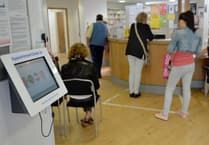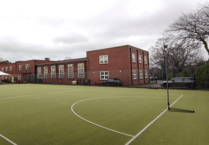Bob Pritchard of Active Surrey says that keeping your children active can help them with their home-schooling.
BY NOW, most parents of primary school age children will have experienced the joys of home schooling. Depending on the age of your child, the mood they are in and the resources provided by their school, some days will be better than others.
While it may seem odd, ensuring children stay active can be key to ensuring they perform well in their virtual lessons. The important thing is to ensure the day is broken up with short periods of activity – every 20 to 30 minutes for younger children. But what can parents try for a change, and what’s the proof it helps?
Schools breaks between lessons are not just there to allow the teachers to grab a cuppa. Running around a playground, or just walking from one room to another, breaks up long periods of sitting and burns off some energy, reducing the urge to fidget.
Young children can try the 10-minute Disney Shake Ups featured on www.nhs.uk and older children can check out two-minute hits from the Nike Move Crew on YouTube.
Research for the BBC’s Super Movers’ initiative last year found that 77% of the 17 schools in a study noted an improvement in brain function and learning after exercise. The mood of children was also positively affected, particularly with boys, which further helped learning.
A lot of schools use “active learning” techniques in their lessons. Parents can emulate this by following the BBC Supermovers site on www.bbc.co.uk or see Premier League Primary Stars for football obsessed youngsters at www.plprimarystars.com.
Dance isn’t just for girls. Moving more releases endorphins, the body’s own feel good hormones, for everyone. Any type of vigorous movement can stimulate their release, but some studies suggest that dancing encourage greater levels, and concentrating on dance steps is also a good way to get your mind onto other things.
The U DO IT website, www.udoitdance.com, offers free street dance lessons and any child needing inspiration might want to look at the resources on the Get Set website, www.getset.co.uk, which has ideas from Team GB and Paralympic athletes.
Whatever our age, sitting too long slows your metabolism. It leads to a build-up of visceral fat which contributes to increased risks of obesity and with it, type 2 diabetes and other health conditions.
To help childrenburn off energy, Joe Wicks is still doing his thing every weekday on YouTube. Younger children may respond well to the daily Superhero Fitness workouts from Our Parks UK on Facebook.
If you don’t have access to the internet, or can’t give your child access, there are lots of things you can do at home to keep the family active. Make sure you make the most of the daily exercise allowance and challenge your kids to on-the-spot tests when you are out for a walk.
Try seeing who is the quickest to the next lamppost, or how quickly can they do 30 step-ups at your front door.
You can also try some traditional games like hopscotch if you have a garden. If the weather keeps you inside, a frying pan, a couple of saucepans for “baskets” and some rolled-up socks can be all you need to invent your own new games.
* Active Surrey is a not for profit, partner-funded organisation dedicated to the support, promotion and development of sport and active lifestyles throughout the county. Find out more at www.activesurrey.com.




